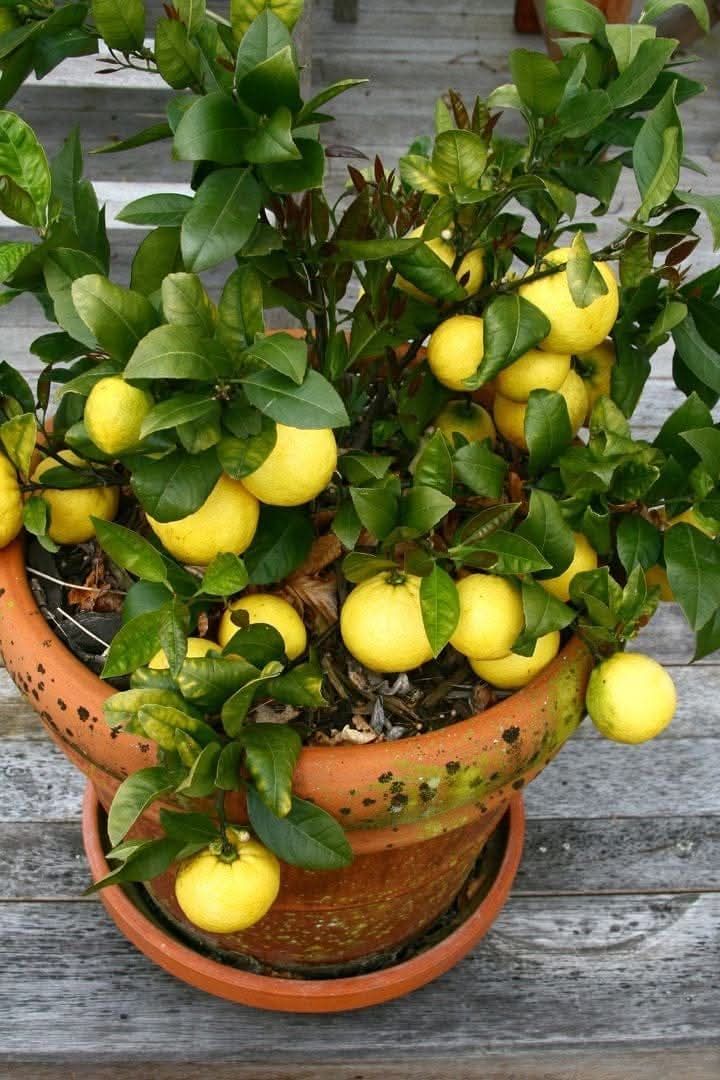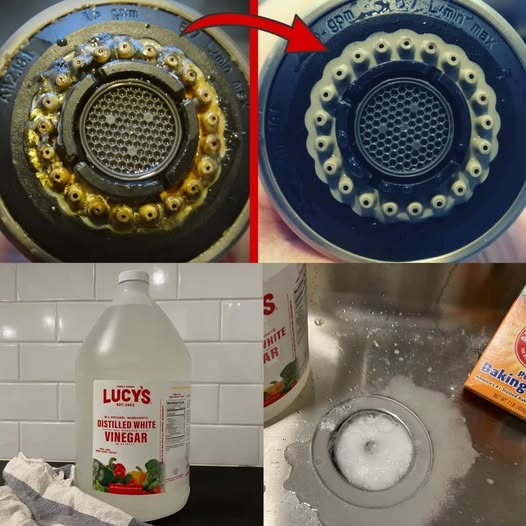Growing a lemon tree in a pot is a rewarding project, allowing you to enjoy fresh lemons even if you lack a garden or live in a colder climate. Lemon trees are surprisingly adaptable and can thrive in containers if provided with the right care. In this article, we’ll guide you through the essential steps to grow a healthy, fruit-producing lemon tree in a pot.
1. Choosing the Right Lemon Tree Variety
When growing a potted lemon tree, selecting the right variety is key. You need a lemon tree that’s suitable for container life and can thrive in a limited space while being productive. Here are some excellent choices:
- Meyer Lemon: This dwarf variety is the best for small spaces and colder regions. It’s known for its sweet, thin-skinned fruit, which is smaller and less tart than the standard lemon.
- Ponderosa Lemon: This hybrid variety produces larger lemons, which are perfect if you want more significant fruits. It also thrives well indoors.
- Lisbon Lemon: A standard lemon variety, Lisbon lemons do well in pots but require regular pruning to manage their size and shape. These are great for those who have a bit more space and prefer traditional lemons.
2. Selecting the Perfect Pot
The pot you choose can significantly impact the growth and health of your lemon tree. Here are the essential factors to consider when selecting the perfect pot:
- Size: Choose a pot that is large enough for the tree’s roots to spread and grow. A pot with at least a 15- to 20-gallon capacity is ideal. A diameter and depth of around 12 to 18 inches give the roots plenty of space for expansion.
- Material: Clay or ceramic pots are best because they allow for better air circulation and root health. However, if you need something lighter and easier to move, a plastic pot will work, though it may not offer the same breathability.
- Drainage: Ensure the pot has good drainage holes at the bottom. Without proper drainage, your lemon tree could suffer from root rot due to excess moisture. Drainage holes are critical to maintain healthy root systems.
3. Using the Right Soil Mix
Lemon trees need well-draining soil to thrive. Look for a commercial potting mix that is designed for citrus plants, or create your own custom blend by mixing the following:
- DIY Mix: A good homemade soil mixture is made of one-third potting soil, one-third sand, and one-third perlite. This blend provides excellent drainage and aeration for the roots.
- pH Level: The ideal pH level for lemon trees is slightly acidic, between 5.5 and 6.5. This pH range is perfect for citrus plants and helps them absorb nutrients efficiently.
4. Planting Your Lemon Tree
Once your pot and soil are ready, it’s time to plant your lemon tree. Follow these steps for a healthy start:
- Remove the Tree: Gently remove the tree from its nursery pot. Be careful not to disturb the roots too much while removing it.
- Positioning: Place the tree in the center of the pot. The root ball should sit slightly above the level of the soil to avoid waterlogging. Make sure the roots are well spread out.
- Backfill Soil: Fill in around the root ball with the soil mix, firming it gently to remove any air pockets. After planting, water the tree thoroughly to settle the soil around the roots.
5. Providing Optimal Sunlight
Lemon trees require plenty of sunlight to thrive and bear fruit. Here’s how to ensure your tree gets enough light:
- Indoor Placement: If growing indoors, place your potted lemon tree near a south-facing window where it can receive at least 8 hours of direct sunlight daily.
- Outdoor Placement: If keeping the tree outdoors, choose a spot where it will get full sun. Make sure the tree gets at least 6-8 hours of sunlight per day. Rotating the tree every few weeks ensures even growth on all sides.
6. Watering Properly
Watering is one of the most crucial aspects of growing a potted lemon tree. However, over-watering is a common mistake, so it’s important to get it right:
- Frequency: Water the tree when the top inch of soil feels dry. In the warmer months, this could mean watering every 3-4 days. Be mindful that lemon trees in pots may need more frequent watering during hot weather.
- Technique: Water deeply so that the moisture reaches the entire root system. Water until it flows out of the drainage holes at the bottom of the pot.
- Humidity: Lemon trees prefer humid conditions, especially if grown indoors where the air can be dry. Mist the leaves occasionally or place a humidity tray beneath the pot.
7. Fertilizing for Fruit Production
Lemon trees in pots require additional nutrients to encourage fruit production:
- Citrus-Specific Fertilizer: Use a slow-release, balanced fertilizer formulated specifically for citrus plants. This ensures that the tree receives the necessary nutrients for healthy growth.
- Frequency: Feed your tree every 4-6 weeks during the growing season, typically from spring to early fall. In the winter, you can reduce the frequency of fertilizing as the tree enters a dormant phase.
- Essential Nutrients: Look for fertilizers rich in nitrogen, magnesium, and iron. These nutrients are particularly important for lemon trees and promote lush, healthy growth and fruiting.
8. Pruning and Shaping
Pruning is important for keeping your potted lemon tree healthy and manageable in size:
- Timing: Prune in early spring or late fall, after the fruit has been harvested. This helps to prevent any damage to new buds or fruit production.
- Technique: Trim any dead, damaged, or overcrowded branches. Focus on removing branches that are crossing each other or growing inwards. This will help improve airflow and prevent disease.
- Shape: Shape your tree by cutting back long or leggy branches and encouraging a bushy, compact form. This will help the tree stay within the confines of its pot and promote better fruiting.
9. Repotting for Continued Growth
As your lemon tree grows, it may outgrow its pot and need repotting. Generally, this should be done every 2-3 years:
- New Pot Size: Choose a new pot that’s 2-3 inches wider in diameter than the current one. This allows the tree’s roots to continue growing and spreading.
- Repotting Process: Gently transfer the tree into the new pot, making sure the root ball is centered. Trim any damaged or diseased roots before adding fresh soil. Water thoroughly after repotting.
10. Managing Pests and Diseases
Pests and diseases are a concern for all plants, including potted lemon trees. Watch out for these common issues:
- Common Pests: Aphids, spider mites, and scale insects can all affect lemon trees. Remove pests by spraying the tree with insecticidal soap or neem oil.
- Diseases: Root rot is the most common disease affecting potted lemon trees. Ensure proper drainage and avoid over-watering, as these conditions lead to root rot.
- Regular Checkups: Inspect your tree regularly for any signs of pests or disease. Early detection is key to preventing a larger issue.
11. Ensuring Pollination
Pollination is vital for fruit production. If your tree is indoors, it may need assistance:
- Hand Pollination: If natural pollinators (such as bees) aren’t available, use a small paintbrush or cotton swab to transfer pollen from one flower to another.
- Encouraging Pollinators: If the tree is outdoors, attract pollinators by planting nearby flowers or herbs that attract bees and butterflies.
12. Temperature and Climate Needs
Lemon trees are sensitive to temperature fluctuations, especially cold weather. Here’s how to protect your tree:
- Ideal Temperature: Lemon trees thrive in temperatures between 55°F and 85°F (13°C and 29°C). If the temperature drops below 50°F (10°C), bring the tree indoors.
- Indoor Climate: Keep the tree away from drafty windows, heating vents, or air conditioners, which can create temperature extremes that stress the tree.
13. Caring for Flowers and Fruit Development
The transition from flowers to fruit is a delicate process:
- Supporting Branches: As fruit develops, branches may sag due to the weight. Use plant ties or stakes to support the branches and prevent breakage.
- Patience: Lemon fruit takes 6-9 months to mature fully. During this time, ensure the tree continues to receive consistent sunlight, water, and nutrients.
14. Encouraging Fruit Production
To boost fruit production, consider the following tips:
- Stress Period: Let the soil dry out slightly in late winter to mimic a dormant period, which will trigger blooming in the spring.
- Gradual Watering: After the dormant period, resume watering gradually to encourage the tree to produce fruit.
15. Harvesting Your Lemons
Harvesting the fruit at the right time is important for flavor and quality:
- Maturity Signs: Lemons are ready to harvest when they are fully yellow and feel slightly soft when gently squeezed.
- Harvesting Technique: Use clean, sharp pruning shears to cut the fruit from the tree. This helps avoid damaging the tree or other branches.
16. Winter Care and Maintenance
In colder climates, it’s important to provide extra care during the winter months:
- Indoor Transition: If you live in an area with cold winters, bring your lemon tree indoors before temperatures drop below 50°F (10°C).
- Light and Humidity: Place the tree in a well-lit area, and consider using a humidifier to keep the air moist, as dry indoor air can stress the tree.
Conclusion
Growing a potted lemon tree that produces fruit is a fulfilling and enjoyable project. By following the right steps—from choosing the right variety to ensuring proper sunlight, watering, and pruning—you can successfully grow lemons at home, even without a garden.
Frequently Asked Questions
1. Can a potted lemon tree survive winter indoors? Yes, as long as it receives enough light and the right humidity levels, a potted lemon tree can thrive indoors during the winter months.
2. How often should I water my potted lemon tree? Water when the top inch of soil is dry. In warmer months, this could mean watering every 3-4 days.
3. How long does it take for a potted lemon tree to bear fruit? Typically, it takes 3-5 years from planting for a lemon tree to bear fruit, although this varies depending on the variety and growing conditions.
4. What type of fertilizer is best for lemon trees in pots? A balanced, slow-release citrus fertilizer works best, as it provides the essential nutrients like nitrogen, magnesium, and iron.
5. How can I ensure my lemon tree flowers and produces lemons? Make sure your tree receives adequate sunlight, water, and fertilizer. For indoor trees, hand pollinate if necessary to encourage fruit production.





